Task III.C Operation of Systems - Sub-Section 1:: Primary And Secondary Flight Controls
Lesson Overview
- Objective
-
The student should develop knowledge of the difference between primary and secondary flight controls and how to operate them.
- Reference
-
-
(PHAK) FAA-H-8083_25B
-
(AFH) FAA-H-8083-3B
-
PA-28-151 POH
-
- Elements
-
-
Ailerons
-
Stabilator
-
Rudder
-
Flaps
-
- Equipment
-
-
White board
-
Markers
-
References
-
- Schedule
-
-
Discuss objectives
-
Review material
-
Development
-
Conclusion
-
- Instructor Actions
-
-
Discuss lesson objectives
-
Present lecture
-
Questions
-
Homework
-
- Student Actions
-
-
Participate in discussion
-
Take notes
-
Ask and Respond to Questions
-
- Completion Standards
-
The student will understand what the primary flight controls are and their operation, understand what the secondary flight controls are and their operation.
Instructor Notes
- Attention
-
Proper understanding of the control surfaces allows for an understanding of the correct control input to fly the aircraft.
Introduction * Review Objectives and Elements/Key ideas
- What
-
Primary controls are the controls that allow the pilot to control the aircraft about its three axes of rotation. Secondary flight controls are intended to improve the aircraft performance characteristics or to relieve excessive control loading and consist of high lift devices such as slats and flaps as well as flight spoilers and trim systems.
- Why
-
An adequate level of knowledge of the control systems of the aircraft is imperative to the understanding of the aircraft’s flight characteristics to ensure safe flight.
Lesson Details
Primary Flight Controls
-
Ailerons - Controls the Roll of the aircraft around the longitudinal axis.
-
Differential Type Ailerons (Piper Warrior: pre-1976)
-
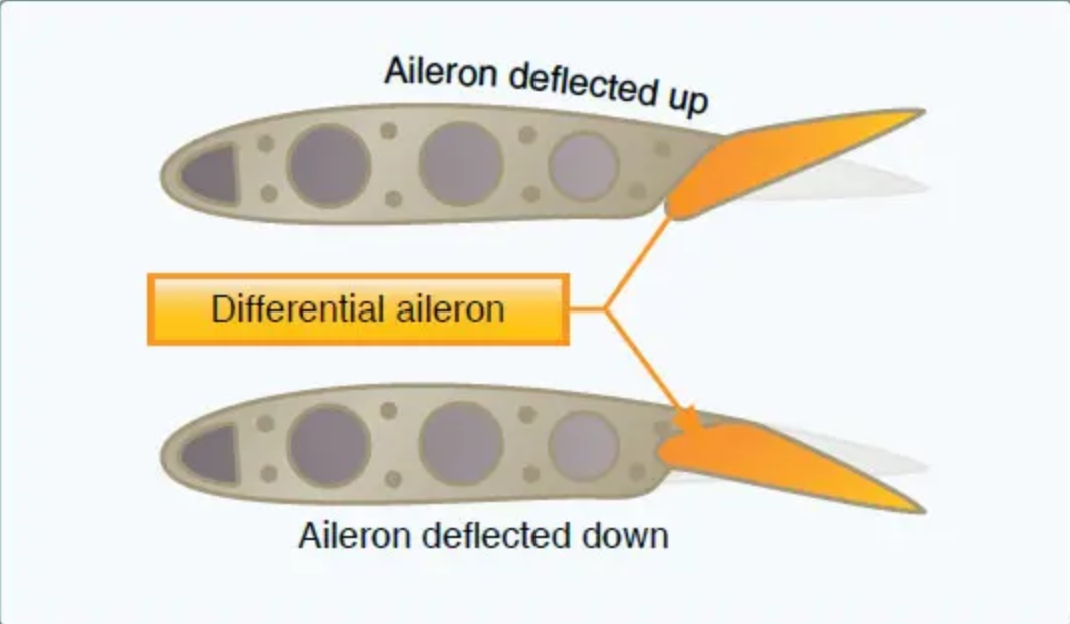
-
Deflect upward 23° (±2°)
-
Deflect Downward 17° (±2°)
-
-
Controlled by a system of gears, cables, chains, pulleys, pushrods, bell cranks, and counterweights
-
A bell crank takes two cables and changes the direction of motion to the aileron pushrod.
-
-
-
Stabilator - Controls the pitch of the aircraft around the latitudinal
-
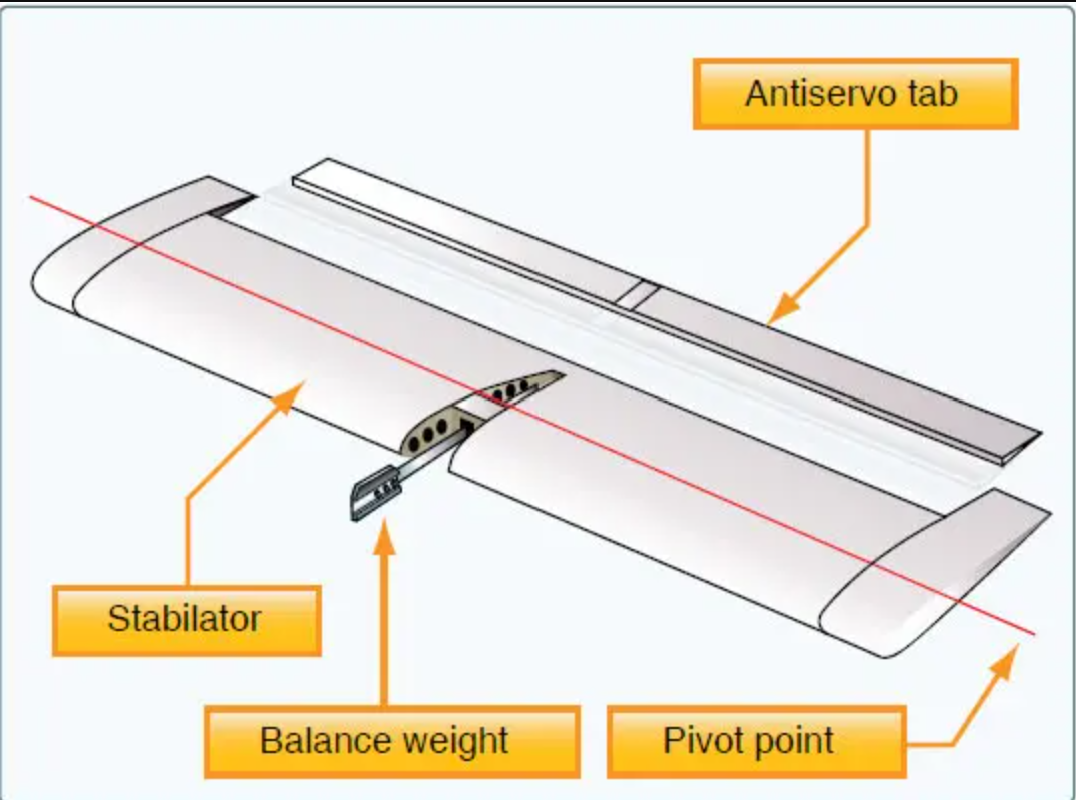
-
A one-piece horizontal stabilizer that pivots from a central hinge point.
-
Pulling back lowers the stabilator leading edge, the tail goes down and the nose of the aircraft goes up.
-
Pushing forward raises the stabilator leading edge, the tail goes up and the nose of the aircraft goes down.
-
-
-
Rudder
-
Controls the yaw of the aircraft around the vertical axis.
-
When the rudder is deflected into the airflow, it alters the airflow around the stabilizer/rudder, creating sideward lift that causes the tail to move to the right or left and causes the nose of the aircraft to yaw to the left or right.
-
-
Used to maintain coordination in turns and to counteract the forces of P-Factor and Torque.
-
Takeoff power setting rudder correction
-
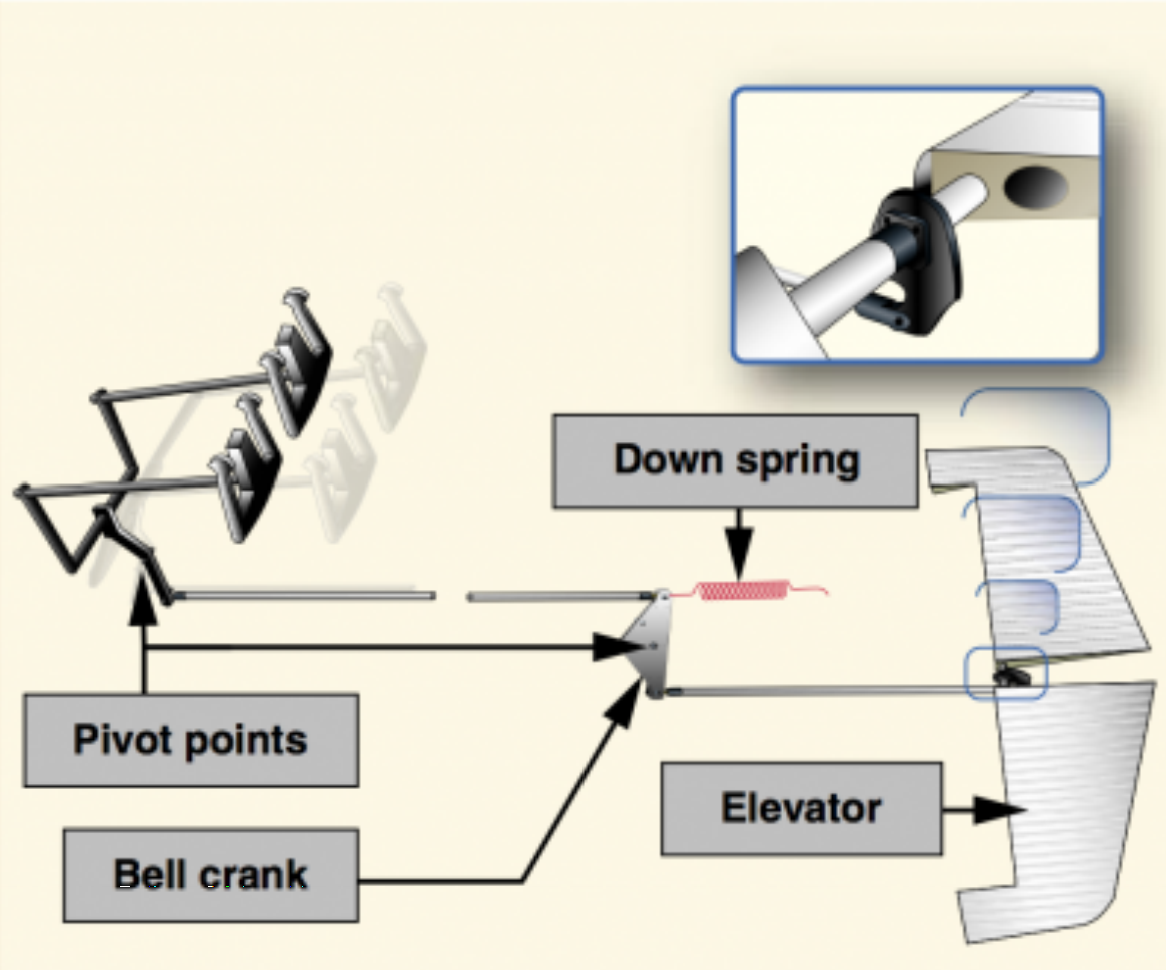
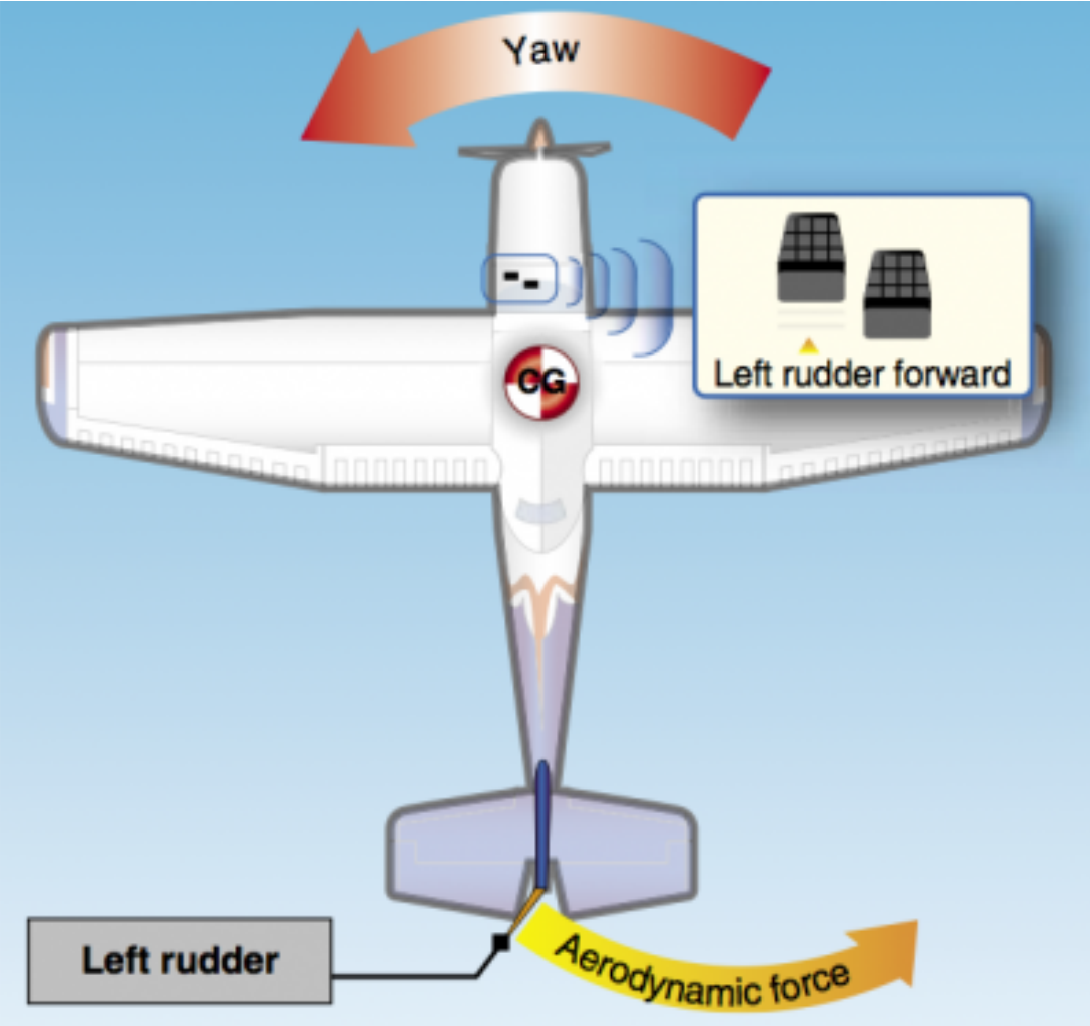
-
-
-
Secondary Flight Controls
-
Flaps
-
Attached to the trailing edge of the wing, provides increased lift and drag for any given Angle of Attack when extended.
-
Most commonly used during approach and landing, allows for a steeper descent at a lower airspeed.
-
When extended the flaps shift the center of pressure farther aft which causes the nose to lower as the flaps are extended.
-
-
The Flaps have settings of 0°, 10°, 25°, 40°
-
Flaps 25° causes a decrease in vertical speed by 245 fpm.
-
Flaps 40° causes a decrease in vertical speed by 275 fpm.
-
Normal Takeoff flap setting is 0°
-
Short Field Takeoff setting up to 25°
-
-
Slotted Flaps
-
Most popular flap on aircraft today.
-
Increases the lift coefficient significantly more than plain or split flaps.
-
When the flap is lowered it creates a small gap between the wing itself and the flap allowing some of the air from below the wing up to prevent the separation of the smooth airflow.
-
-
-
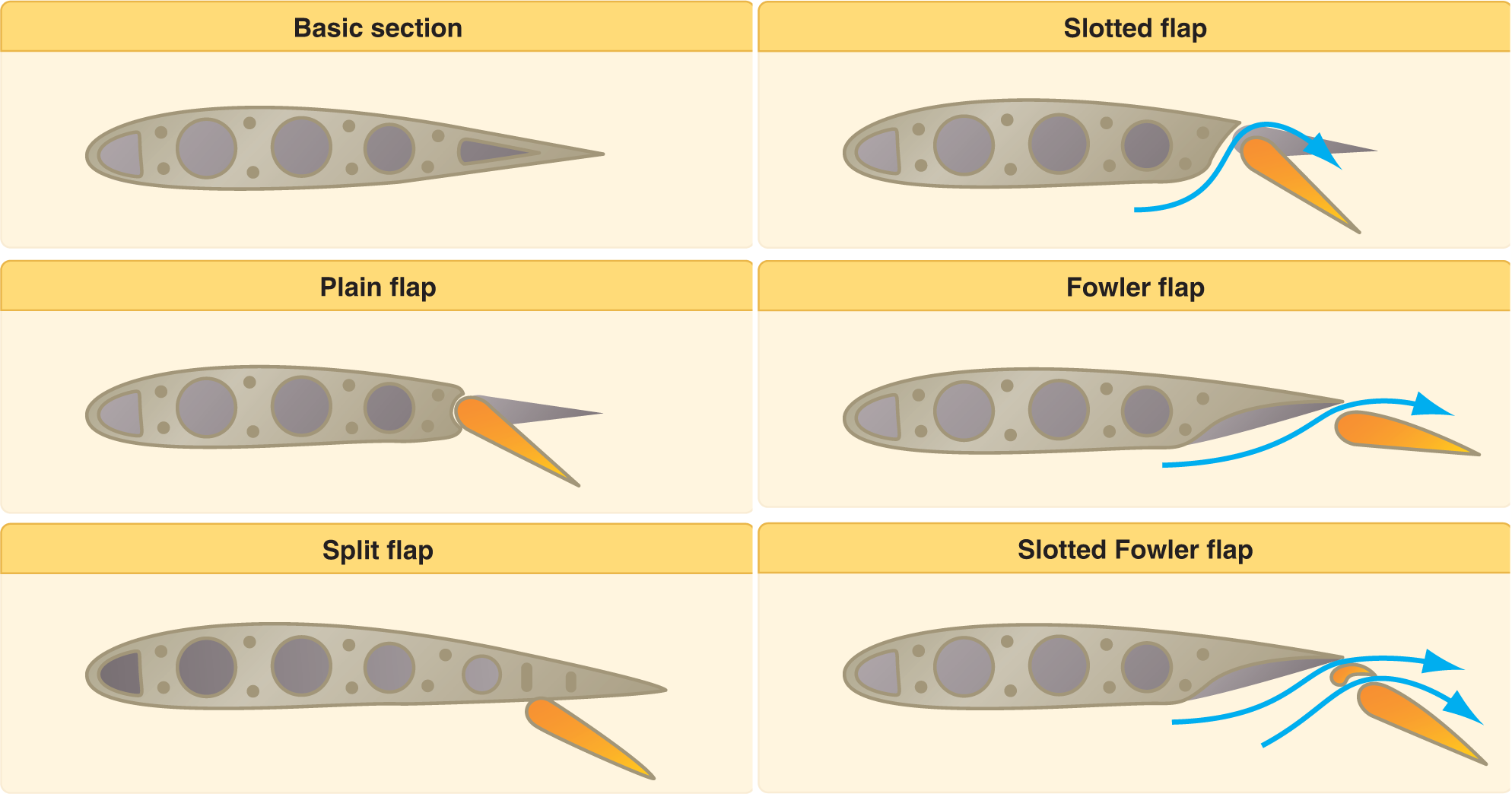
Conclusion
-
Brief review of the main points.
-
Primary flight controls control the aircraft around the three axes of flight.
-
The secondary flight controls improve the aircraft performance characteristics.
-
The Warrior is equipped with differential type ailerons, slab-type stabilator, rudder, and slotted flaps.
ACS Requirements
To determine that the applicant exhibits instructional knowledge of the elements of principles of flight by describing:
-
Primary and secondary flight controls
-
Trim
-
Powerplant and propeller
-
Landing gear
-
Fuel, oil, and hydraulic
-
Electrical
-
Avionics including autopilot
-
Pitot static, vacuum/pressure and associated instruments
-
Environmental